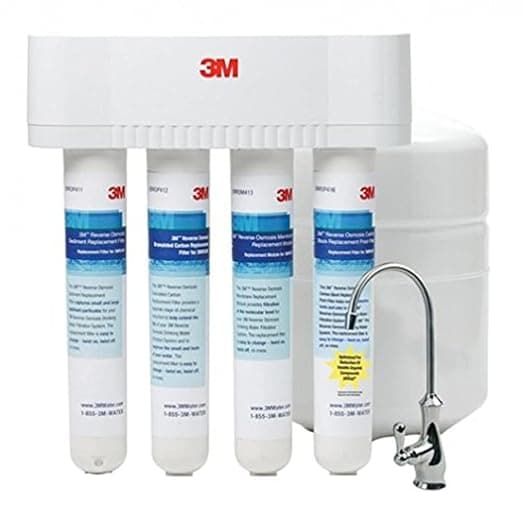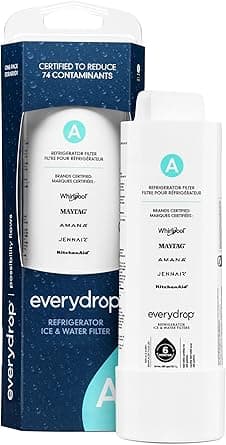Vance Tap Water Quality Report
Vance's water has 7 contaminants above EPA MCLGs. We recommend using a certified water filter.
Utility
TUSCALOOSA WATER &
People Served
142,383
MCL Violations
0
Last Updated
Feb 16, 2025
Is Vance Tap Water Safe to Drink?
Vance's water has 7 contaminants above EPA health-based guidelines. We strongly recommend using a certified water filter to reduce exposure to these contaminants. Check our filter recommendations below for NSF-certified options that can remove the specific contaminants found in Vance's water.
The data below shows test results from TUSCALOOSA WATER & SEWER, which serves 142,383 people in the Vance area. Water quality testing is conducted regularly and reported to the EPA. This report was last updated Feb 16, 2025.
Vance Water Quality Test Results
Key Water Quality Metrics
Contaminants Detected
⚠️ Contaminants Above EPA MCLG (7)
Bromodichloromethane
What is Bromodichloromethane?
Member of trihalomethanes (THMs) that form in water treated with chlorine
Health Effects
Health protective benchmarks for BDCM are based on carcinogenicity and liver toxicity observed in animal studies. The EPA has classified BDCM as a probable human carcinogen. Results from animal studies also suggest that kidney, immune system, spleen, and developmental toxicity are associated with exposure to BDCM. BDCM has been shown to produce DNA changes (genotoxicity) in laboratory studies.
Affected Organs
Common Sources
Total THMs
What is Total THMs?
Group of contaminants that form in drinking water systems when a disinfectant, typically chlorine, reacts with organic matter
Health Effects
Drinking water standards for total THMs are based on evidence of carcinogenicity in human and animal studies, as well as liver and kidney toxicity observed in animal studies. Individual THMs have been further associated with developmental, immune, spleen, and genotoxicity.
Affected Organs
Common Sources
Radium 228
What is Radium 228?
Radium-228 is a radioactive isotope of radium that occurs naturally in uranium and thorium ores. It is part of the decay chain of uranium-232 and has a half-life of 5.75 years. Radium-228 can be found in groundwater and can contaminate drinking water supplies.
Health Effects
Exposure to radium-228 can lead to an increased risk of cancer, particularly bone cancer, due to its radioactive properties. Long-term exposure can also affect the kidneys and other organs.
Affected Organs
Common Sources
Chloroform
What is Chloroform?
Member of trihalomethanes (THMs) that form in water treated with chlorine and is generally the most abundant THM formed in drinking water
Health Effects
Health protective benchmarks for chloroform have been developed based on kidney and liver carcinogenicity observed in animal studies, and liver toxicity observed in occupational studies. The EPA classifies chloroform as a probable human carcinogen based on animal evidence, and there is additional epidemiological evidence that may increase the risk of colon and bladder cancer in humans. Results from animal studies also suggest that exposure to chloroform can cause liver, developmental and immune toxicity. Acute exposure to low levels of chloroform will cause nervous system toxicity.
Affected Organs
Common Sources
Dibromochloromethane
What is Dibromochloromethane?
Member of trihalomethanes (THMs) that form in water treated with chlorine
Health Effects
Health protective benchmarks for DBCM have been developed based on liver toxicity and carcinogenicity observed in animal studies. EPA has classified DBCM as a possible human carcinogen based on animal evidence, while IARC (International Agency for Research on Cancer) says it is unclassifiable as a human carcinogen. Kidney toxicity has also been associated with DBCM based on evidence from animal studies. DBCM has been shown to produce DNA changes (genotoxicity) in laboratory studies.
Affected Organs
Common Sources
Chlorite
What is Chlorite?
Chlorite is a chemical compound that is a derivative of chloric acid. It is often found in drinking water as a byproduct of chlorine disinfection processes. Chlorite can also occur naturally in some water sources.
Health Effects
Exposure to chlorite can lead to various health issues, including irritation of the skin, eyes, and respiratory tract. Ingesting high levels of chlorite can cause gastrointestinal distress and may affect red blood cell function, leading to methemoglobinemia, a condition where the blood cannot carry oxygen effectively.
Affected Organs
Common Sources
Aluminum
What is Aluminum?
Naturally-occurring metal found in the Earth's crust with multiple industrial uses, including the construction of buildings and powerlines, and the manufacture of vehicles, consumer electronics, household appliances, and kitchenware. It is also frequently used in municipal water treatment to clarify water from lakes and reservoirs. Health effects of aluminum exposure are inconclusive but actively researched.
Health Effects
Much of the current research on the health effects of aluminum in drinking water is still inconclusive and controversial. Health protective benchmarks for aluminum in drinking water set by the California Office of Environmental Health Hazard Assessment are based on potential neurotoxicity and developmental toxicity in premature infants. People more susceptible to aluminum impacts include infants and people with impaired kidney function.
Affected Organs
Common Sources
Understanding the Data
This data comes from your local water utility testing. The bar charts compare detected levels against EPA's Maximum Contaminant Level Goal (MCLG). Contaminants above the MCLG are shown by default and may require filtration. All other tested contaminants are within safe levels and can be viewed by expanding the section above.
Recommended Water Filters for Vance
Based on Vance's water quality data, these NSF-certified filters are recommended to remove contaminants above EPA MCLGs.

Solventum Purification Inc.
3MRO401
NSF Certified:
Daily Production
11.48 gpd
Removes 15 contaminants:
Arsenic, Barium, Cadmium, Chromium (Total), Chromium (VI) +10 more

Solventum Purification Inc.
3MRO301
NSF Certified:
Daily Production
11.48 gpd
Removes 15 contaminants:
Arsenic, Barium, Cadmium, Chromium (Total), Chromium (VI) +10 more

Whirlpool Corporation
W11256135
NSF Certified:
Capacity
1001 gal
Filter Life
3 mo
Flow Rate
0.7 gpm
Removes 19 contaminants:
1,2 Dichlorobenzene, 1,4 Dichlorobenzene, 2,4-D, Asbestos, Atrazine +14 more

Whirlpool Corporation
W11569861
NSF Certified:
Capacity
1001 gal
Filter Life
3 mo
Flow Rate
0.52 gpm
Removes 22 contaminants:
1,2 Dichlorobenzene, 1,2,4 Trichlorobenzene, 1,4 Dichlorobenzene, 2,4-D, Asbestos +17 more
Verify Your Water Quality with Independent Testing
With 7 contaminants above EPA health guidelines, independent laboratory testing provides a second opinion and can track changes over time.

SimpleLab
Advanced Home Water Test
$369
Most comprehensive home water test including all standard tests plus additional parameters for ultimate peace of mind.

SimpleLab
Standard Home Water Test
$232
Comprehensive water analysis testing over 200 contaminants including bacteria, heavy metals, and chemical compounds.

Tap Score
Advanced Microplastics Test
$636
Cutting-edge testing for microplastics particles in drinking water using advanced laboratory techniques.
Frequently Asked Questions About Vance Tap Water
Vance's water has 7 contaminants above EPA MCLGs. We strongly recommend using a certified water filter to reduce exposure to these contaminants. Check our filter recommendations below for NSF-certified options that can remove the specific contaminants found in Vance's water.